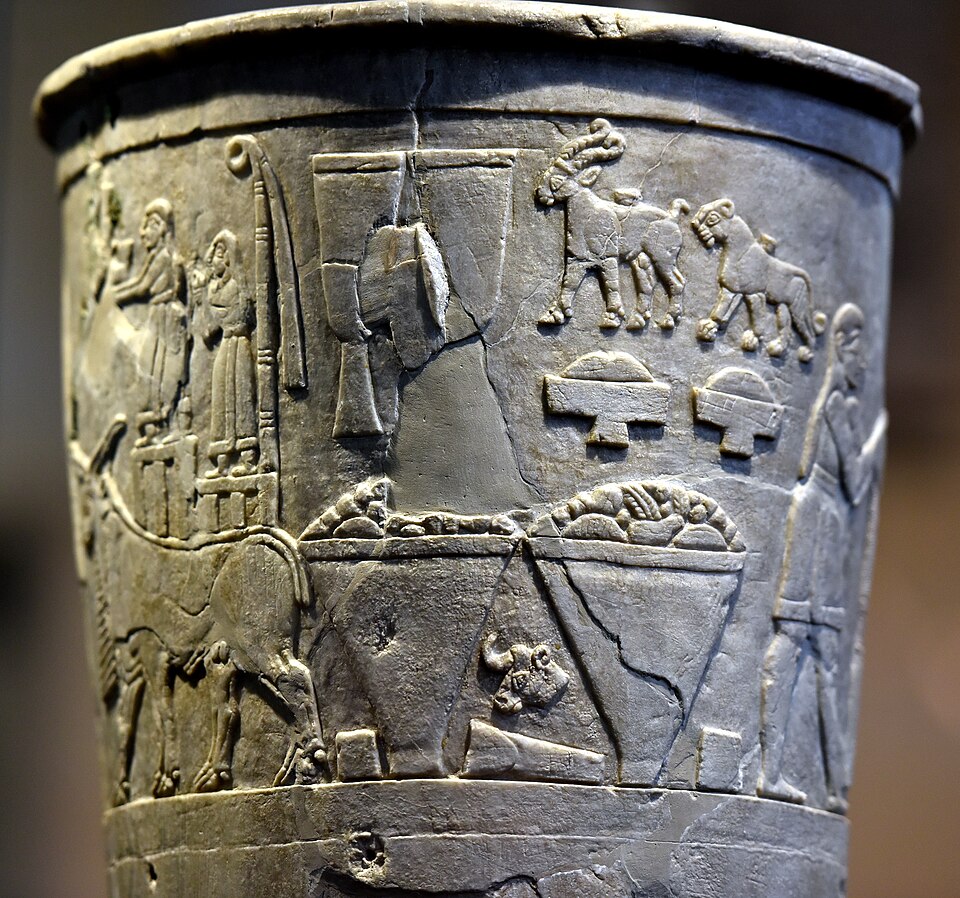The Monetary Role of Silver in Sumer
Silver was primarily used by the Palace for entrepreneurial purposes, a means of increasing wealth for the public good.
Introduction
The economies of Mesopotamia and Egypt had two branches. Entrepreneurial trade operated on a silver standard, atop a rural economy on a grain standard for paying agricultural fees and debts—on the threshing floor for grain, or in the shearing season for wool. Silver was used primarily by the palace and the entrepreneurs managing its trade and other enterprise. To import silver and supply it to the economy at large, Mesopotamia’s palace mobilized crop surpluses to feed weaving and other workshops producing handicrafts to export.
Palaces Managed Luxury Goods
Throughout the history of Sumer, “the management of silver and gold, of textiles, and of other precious or ‘luxury’ goods is largely dominated by the royal palace,” notes Steven J. Garfinkle.[1] Even in Lagash c. 2350 BC the temples “did not actively control the politically important treasuries” but were under control of the palace. In neighboring Umma numerous branches of the economy converted their primary goods annually “into tiny sums of silver, which were collected by the province and then delivered to the state in the form of donations to a religious festival.… Luxury goods—textiles, silver and gold, meat, and special edible delicacies—are primarily found in one specific context, namely the palace.”
Standardizing Silver
Denominating prices in silver forced reliance on scales. To prevent the awkwardness of weighing relatively small pieces, silver was cast into jewelry, such as bracelets made with easily broken-off segments measured in shekels. Marvin Powell[2] notes that the Middle Babylonian word for 1/8 shekel, bitqu (literally “cutting”), suggests silver rings and coils, and may originally have denoted “a piece of standard size cut off from such a silver coil.” Such jewelry money gave way to officially stamped weights of precious metal as coinage in classical antiquity.
Silver’s ‘Hunger’ for Profit
What is not well understood is how silver got into the hands of Mesopotamia’s general population. Some would have been obtained by selling crops, textiles, or other handicrafts to the palace,[3] or by entrepreneurs earning silver on their trade and management of public services. The palace also paid silver to mercenaries, and there are hints of rulers handing out silver tokens to soldiers after victory and perhaps at royal festivals. But most of the influx of silver from foreign trade was re-invested in more trade ventures or lent out in rural usury for current income and, ultimately, to acquire land. Silver lying around not lent out was called “hungry” for profit-making opportunities—for creditors who “ate” the interest.
The Treasury as a Public Utility
Personal debts mounted up rapidly as a result of agrarian usury, and inability to pay them often resulted from crop failure, drought, or the debtor’s illness or other misfortune. Royal proclamations cancelling these agrarian debts preserved economic viability on the land. Public oversight of money went hand in hand with management of debt, including the setting of interest rates and customary proclamation of royal amnesties for personal agrarian debts. Early Near Eastern rulers recognized that most of their population were in debt and hence needed to be protected from forfeiting their income and means of self-support to creditors. The aim was to maintain overall social balance, above all by saving the economy at large from being impoverished by keeping the magnitude of debt within the ability to be paid.
In contrast to the Near Eastern reality, the Barter Theory of money’s origins treats money as a commodity, not as a public utility. It sees the original role of money as being to serve the interest of individual savers who preferred hard bullion to preserve the value of their savings, and of debts owed to them under “hard” debt collection rules. The theory has no regard for the economic disruption caused by the widespread inability of debtors to pay.
References
- ↑ Steven J. Garfinkle Entrepreneurs and Enterprise in Early Mesopotamia: A Study of Three Archives from the Third Dynasty of Ur, 1st ed., (Bethesda: CUSAS, 2012), pp. 226, 244-246.
- ↑ Marvin A. Powell, “Sumerian Merchants and the Problem of Profit,” Iraq, vol. 39, no. 1, (1977), pp. 23-29.
- ↑ Walther Sallaberger, Das Gilgamesch-Epos: Mythos, Werk Und Tradition, (Munich: CH Beck, 2008).



